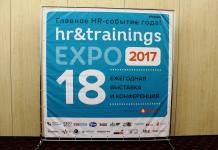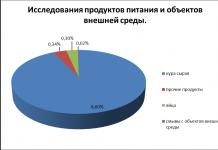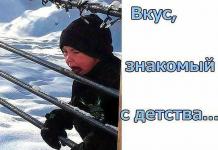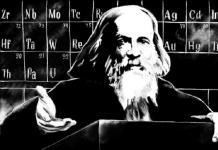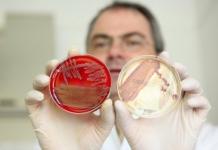The staff employs highly qualified specialists who have been engaged in scientific activities in the field of mass spectrometry for many years.
The leading developers have dozens of scientific articles, as well as the latest developments that compete with foreign counterparts and meet international quality standards
HISTORY OF THE COMPANY
The company successfully operates in the market of high technology products, has been manufacturing and selling spectrometers since 1992.
The company offers comprehensive solutions for the following tasks using time-of-flight mass spectrometry:
- determination of humidity in the underbody space of microcircuits and ERI products
- express control of the gas phase of technological processes
- elemental and chemical analysis of solid-phase samples
- determination of the component composition of polymer compounds
- dynamic diagnostics of a gas environment during experimental physical and chemical processes
- monitoring and prospecting works at facilities using a portable mini-complex
PRODUCED EQUIPMENT
The company develops and manufactures compact, small-sized gas analyzers based on time-of-flight mass spectrometers for solving a wide range of problems related to the quantitative and isotopic determination of the composition of gaseous and solid-phase compounds.
Time-of-flight mass spectrometers carry out a continuous comprehensive analysis of the composition of a sample in on-line mode and, therefore, are effective in dynamic control of technological processes, environmental monitoring in industrial zones and conducting scientific research.
Gas analyzers based on mass spectrometers can operate as a separate compact device for express analysis of multicomponent gas streams in real time, and as part of diagnostic or technological complexes:
- when conducting thermographic analysis;
- in studies of epitaxial crystal growth,
- when studying explosive combustion processes,
- in situ monitoring of the gas phase composition in coating deposition processes by the MO CVD method.
The developed software makes it possible to visually observe the mass spectrum in on-line mode, register with high accuracy the measured masses in the entire spectrum region, and determine the relative percentage composition of the components selected by the operator.
SERVICES
By supplying small-sized mass spectrometers to research institutes and university and factory laboratories, we not only carry out development taking into account all the technical requirements of the problem being solved and the entire range of commissioning works, but also provide author's support.
Our specialists, together with the Customer, conduct test experiments in order to optimize the operating modes and, if necessary, adapt gas analyzers in the event of an expansion of the range of tasks by the Customer that arose after the delivery of the equipment
OUR CUSTOMERS
The production of our company has been delivered to the following government agencies:
Institute of Metallurgy and Materials Science named after A.A. Baikov RAS
Institute of Electrophysics and Electrical Power Engineering RAS (IEE RAS)
Institute of Crystallography. A. V. Shubnikov RAS
Institute of Physics of Dagestan scientific center RAS
Institute of Chemical Kinetics and Combustion, Siberian Branch of the Russian Academy of Sciences (Russia, Novosibirsk)
CJSC "Svetlana-Semiconductors" (Russia, St. Petersburg)
Mass spectrometric control is an integral part of the nuclear fuel production technology at all its stages, from the production of UF 6 in the sublimation production and control of the enrichment process in the separation production and ending with the production of fuel rods and their processing. In addition, this method is the only analytical method for control and certification of finished products.
Our company, together with OJSC UEKhK, FSUE EZAN and LLC Uralpribor, manufactures and supplies to the market specialized mass spectrometers of the MTI-350 series (-350G, -350T, -350GS and -350GM), designed for re-equipment of nuclear industry enterprises modern means for precision measurements of isotopic, elemental and chemical composition. Mass spectrometers of the MTI-350 series are distinguished by the uniqueness of their analytical characteristics, high reliability and increased service life in industrial conditions.
Features of the MTI-350 series mass spectrometers:
- high dispersion ion-optical system;
- an ion source with a molecular regime of sample leakage into the ionization chamber;
- multi-collector ion receiver with adjustable collector position;
- an inlet system with a reduced consumption of the sample substance;
- electronic part, made with the use of modern element base;
- control system based on an industrial computer with increased reliability;
- specialized software for automatic determination of elemental and isotopic composition
Mass spectrometric complex MTI-350G
The spectrometer is designed for operational analysis of the isotopic composition of uranium in the gas phase (in uranium hexafluoride). The specialized software included in the device allows you to control the operating modes of the mass spectrometer and its individual systems, configure and adjust the device, and perform analysis in an automatic mode.
Main characteristics:
- the upper value of the range of mass numbers at an accelerating voltage of 8 kV - not less than 360;
- resolution - not less than 1000;
- uranium sensitivity threshold - no more than 10 ppm;
- sample consumption - no more than 1 mg / h;
- isotopic sensitivity threshold - no more than 10 ppm;
- memory factor - no more than 1.004;
- the relative standard deviation of a single measurement of the isotopic composition of uranium hexafluoride is not more than 0.02% for the content of uranium-235 in the range of 1 - 5%;
The MTI-350G mass spectrometer is registered in the State Register of Measuring Instruments under No. 23457-02 and has a certificate RU.C.31.005.A No. 13014.
Mass spectrometric complex MTI-350T

The spectrometer is designed to analyze the isotopic composition of uranium, plutonium and mixed fuel
(MOX fuel) in the solid phase.
Main characteristics:
- accelerating voltage value - 8 kV;
- the upper value of the range of mass numbers at an accelerating voltage of 8 kV - not less than 300;
- resolution - at least 800;
- isotopic sensitivity threshold at 1 amu displacement from 238 U peak - no more than 10 ppm;
- the limit of the permissible standard deviation of the random component of the relative error when measuring the atomic fraction of the uranium-235 isotope with a content of 1.0% - no more than 0.04%;
- operating mode - continuous, round-the-clock;
- service life - at least 10 years.
Mass spectrometric complex MTI-350GS

The spectrometer is designed for operational control of the technological process of sublimate production of uranium hexafluoride.
The spectrometer allows simultaneous analysis of the content of the following substances: hydrogen fluoride (HF), nitrogen (N 2), oxygen (O 2), fluorine (F 2), argon (Ar) and uranium hexafluoride (UF 6).
Mass spectrometric complex MTI-350GM

In 2014, work was completed on testing an upgraded version of the MTI-350G mass spectrometer with improved technical and analytical performance.
The main advantage of the new MTI-350GM mass spectrometer is the complete automation of the device hardware, which ensures that all the necessary alignment and adjustment procedures are performed in automatic mode, or when using remote LAN access. The hardware and software complex of the MTI-350GM mass spectrometer allows continuous round-the-clock measurements of the isotopic composition of uranium hexafluoride in a fully automatic mode without human intervention. Thus, the MTI-350GM can be operated as part of an unmanned production system that does not require the presence of an operator.
ISKROLINE 100- modern benchtop emission spectrometer for elemental analysis of metals and alloys. The device is designed for fast and accurate spectral analysis of metals and alloys with various bases (Fe, Al, Cu, Zn, Pb, Sn, Sb, Ni, Ti, Co, Mg). Any spectral lines in the range 174 - 441 nm (including phosphorus, sulfur and carbon lines) with a resolution of 0.02-0.04 nm are available. This spectrometer allows you to solve most of the analytical problems in metallurgical, foundry, machine-building and other industries, namely: analysis of various steels and cast irons (including phosphorus, sulfur and carbon), aluminum and copper alloys, lead, zinc and other non-ferrous alloys and metals. ...
"Grade" for an unlimited number of grades of steels and alloys, the ability to adjust and add grades. The device meets the requirements of GOST for methods of spectral analysis. The accuracy of the analysis exceeds the requirements of GOST 18895-97 by 2-10 times. Dimensions of the device (WxDxH): 440 mm x 495 mm x 175 mm Weight, no more than 80 kg The certificate of initial verification of the device and training of employees are included in the standard delivery set. 1 year warranty.
ISKROLINE emission spectrometers are included in the State Register of Measuring Instruments in Russia, Belarus, Kazakhstan and Uzbekistan.
Optical emission spectrometer ISKROLINE 300/350


ISKROLINE 300/350- a modern laboratory-class emission spectrometer for accurate analysis of metals and alloys with various bases (Fe, Al, Cu, Zn, Pb, Sb, Sn, Ni, Ti, Co, Mg). Any spectral lines are available in the range 174 - 915 nm (including the lines of phosphorus, sulfur, carbon, nitrogen, hydrogen, oxygen, alkaline and alkaline earth elements) with a resolution of 0.007-0.01 nm (in the range 174-415 nm) and 0.02-0.03 nm (in the range of 415-915 nm). The device meets the requirements of GOST for methods of spectral analysis. The accuracy of the analysis exceeds the requirements of GOST 18895-97 by 2-10 times.
The ISKROLINE 300/350 performs more complex tasks, with which small-sized spectrometers (all on the market, regardless of manufacturer) do less well. This is, on the one hand, a quantitative analysis of pure and ultra-pure metals (pure copper, aluminum, lead, etc.), and on the other hand, the determination of the chemical composition of complex and super-complex alloys.
Iskroline 300 is designed in the form of a table and is designed to work while sitting. The Iskroline 350 is designed for standing work. This is an alternative version of the Iskroline 300. The spectrometers differ only in size and appearance... All technical and metrological characteristics of the devices are identical. Dimensions of Iskroline 300 (L x W x H, mm): 1200 x 1100 x 920.Dimensions of Iskroline 350 (L x W x H, mm): 970 x 840 x 1030
Iskroline emission spectrometers are included in the State Register of Measuring Instruments in Russia, Belarus, Kazakhstan and Uzbekistan.
SPAS-01 - arc atomic emission spectrometer

SPAS-01 is a classic arc spectrometer with a discharge in air and processing of the results obtained on a computer. Designed for express analysis of the elemental composition of powder materials (including soils, geological samples, etc.), metals and alloys, as well as the analysis of non-conductive samples.
Areas of use:
- in the production of highly pure materials, such as cathode copper;
- exploration laboratories for express analysis of rock samples;
- mining for elemental analysis of ore;
- ferrous, non-ferrous, powder metallurgy for incoming inspection of raw materials and outgoing inspection of products;
- research institutes, etc.
The SPAS-01 atomic emission spectrometer has an arc discharge in air as a source of excitation of spectra. Power consumption during plasma combustion is not more than 2000 W, without plasma is not more than 500 W. The recording elements are linear CCD detectors. The detection limits of elemental spectral analysis of solids on the SPAS-01 spectrometer according to the "3σ" criterion for most elements are in the range of 10-5 - 10-4%.
Dimensions of the SPAS-01 spectrometer (L x W x H): 1480mm x 1470mm x 1200mm.

- laser-spark emission spectrometer is a unique instrument for analyzing a wide range of analytical samples: metals, alloys, wires, rocks, soils, ceramics, glass, etc.
The peculiarity of the device is the use of a combined source of excitation of spectra. The combined laser-spark emission spectrometer (LIBS) combines the advantages of laser, spark and arc spectrometers and does not bear their disadvantages. From the spark spectrometer, LIBS took the accuracy and reproducibility of the analysis from measurement to measurement. From the arc spectrometer - the versatility of the tasks, and from the laser - simple sample preparation and the ability to analyze miniature and inhomogeneous samples.

Inerta 50- an autonomous installation for purification (additional purification) of argon or other inert gas (helium, neon, xenon or krypton). Removed impurities: oxygen, hydrogen, nitrogen, hydrocarbons, carbon monoxide and carbon dioxide, moisture.
Applications:
- purification of argon for spark and arc emission spectrometers;
- purification of argon or helium for chromatographic analysis;
- wherever a high degree of purification of inert gases is required.
The residual level of inert gas contamination at the outlet is less than 1 ppm, argon at the outlet is 99.9999% pure.
American instrument-making company specializing in analytical instrumentation, instruments for optical methods of chemical analysis, continuous analytical control of the technological process (laboratory, portable, industrial analytical equipment for the chemical, petrochemical, food, pharmaceutical industries). Manufacturer of laboratory, portable and industrial NIR spectrometers (laboratory, portable and in-line industrial analyzers operating in the near infrared region). Manufacturer of optical components for analytical and scientific instruments, medical and technological equipment (solid-state lasers, LED laser modules). Brimrose Corporation manufactures laboratory, portable and industrial optical spectrometers for the near and mid-infrared region of the spectrum (optical spectrometers for the near and mid-infrared range, NIR spectrometers) designed for solving applied analytical problems - identification chemical compounds in field conditions, storage and unloading places, analysis of the component composition and measurement of the moisture content of feedstock, analytical control of technological parameters in production, quality control of finished products of the chemical, petrochemical, food, pharmaceutical industries. Brimrose Corporation's Acoustic Optic Tunable Filter Near Infrared spectrometers (AOTF-NIR spectrometers) are compact, rugged (portable and industrial) with no moving parts and fast spectrum scanning (process control, chemical reactions). in real time). The company also manufactures a 16-channel optical multiplexer as a cost-effective solution for the parallel control of several technological processes. Brimrose Corporation manufactures a whole family of spectrometers for the near and mid-infrared range (AOTF-NIR spectrometers) and analytical systems based on them (NIR spectrometers - analyzers, AOTF-NIR analyzers): portable hand-held NIR spectrometer - analyzer ("Hand-held" AOTF -NIR analyzer), compact and mobile laboratory NIR spectrometer - analyzer (miniature laboratory NIR analyzer), desktop laboratory NIR spectrometer - analyzer, industrial flow NIR spectrometer - analyzer, multichannel industrial flow NIR spectrometer - analyzer (the analytical system includes a NIR spectrometer and a 16-channel optical multiplexer), compact industrial NIR spectrometer - analyzer (Free Space AOTF NIR analyzer), multipurpose industrial NIR spectrometer - analyzer for monitoring the chemical composition and thickness of protective coatings on the surface of materials, the thickness of the lubricant layer on the surface of parts and products (ThinFilm NIR analyzer), in-line BIC spectrometer - an analyzer of the composition of petroleum products for measuring the characteristics of motor fuel, octane number of gasoline, in-line NIR spectrometer - an analyzer of the chemical composition and moisture content of seeds, fruits, food products("Seed Meister" NIR analyzer), in-line NIR spectrometer - analyzer of pharmaceutical products for continuous quality control of tablets (Tablet NIR Analyzer).
The analytical system "Seed Meister" AOTF NIR analyzer is designed for high-speed sorting of hybrid seeds (seeds of corn, soybeans, coffee, watermelon, peanuts), sorts up to 60 seeds per minute according to such criteria as the content of oil, protein, starch, moisture, sugar in seeds , unsaturated organic acids, and the measurement is carried out in parallel in all parameters. The NIR seed analyzer allows in some cases to predict the germination of agricultural seeds. The automated NIR analyzer "Seed Meister" can be used in the food industry for in-line sorting of fruits and vegetables (apples, pears), determination of the sugar content of fruits. The automated NIR analyzer can be used in the food and fish industries for product quality control, continuous determination of protein, oil, water content in the product (continuous measurement of moisture and chemical composition).
Tablet NIR Analyzer, an automated analytical system for the pharmaceutical industry, provides continuous, non-contact, non-destructive quality control of finished dosage forms (tablets, capsules) in the pharmaceutical industry. The automated NIR analyzer Tablet NIR Analyzer works in parallel in the transmission and reflection modes (both measurement modes can be used simultaneously), it controls the chemical composition of the tablets, determines the chemical composition and measures the coating thickness of the tablets right on the conveyor belt. The automated analytical system Tablet NIR Analyzer has an industrial design made of stainless steel (NEMA 4X), an optical system for parallel spectral analysis of tablets on a conveyor belt in reflection and transmission mode, an integrated industrial computer and software for continuous analysis and quality control of pharmaceutical products.
X-ray fluorescence analysis (XRF) is one of the most objective and adequate methods for studying the composition of a substance, since it is direct. The object under study is exposed to an exciting effect - it can be a stream of electrons, protons, X-rays or gamma rays with an energy sufficient to transfer the atoms of the sample into an excited state. The excitation energy is such that the transition of atoms to the ground state gives rise to fluorescence in the X-ray range. The spectral composition of this radiation unambiguously corresponds to the elemental composition of the object. Devices for spectral analysis (spectrometers) in one way or another decompose fluorescent radiation into a spectrum, which is investigated and analyzed using a methodological and mathematical apparatus.
The physical foundations of the method were developed in the first half of the 20th century. In the process of the development of the theory and practice of the XRF method, the areas of its application covered almost all aspects of human activity: science, technology, agriculture. It is needed wherever it is required to quickly and accurately determine chemical composition substances. It is also important that the object does not suffer from the effects of X-ray radiation, which made the application of the method indispensable in art history, forensic science, and forensics.
However, despite the high demand for the XRF method, its application for a long time remained accessible only to the laboratories of large and wealthy enterprises and universities. The fact is that almost until the end of the last century, the development of the XRF hardware base followed the path of increasing the power of the spectrum excitation source: an X-ray tube, a radioactive isotope, a linear accelerator, a synchrotron. For example, the weight of only a high-voltage power supply for an X-ray tube with a capacity of several thousand watts (typical power for such devices) was tens and hundreds of kilograms. Such a powerful X-ray flux required reliable biological shielding; the generated heat had to be removed using water cooling. Thus, the spectrometer was a bulky unit, consuming a lot of energy and requiring a separate room, as well as qualified personnel for operation and maintenance. The price of such a device reached many hundreds of thousands of dollars, which, with high operating costs, made the device inaccessible to laboratories of small and medium-sized enterprises. In addition, due to the complexity and high cost, the number of manufactured devices was insufficient to meet the demand.
It is obvious that a fundamentally different approach is needed to introduce the XRF method into broad analytical practice. The new approach is based on the theoretical and experimental work of K. Anisovich and colleagues. The works are devoted to the calculation of the luminosity and energy resolution for the main schemes of crystal-diffraction spectrometers. The results of theoretical calculations, confirmed experimentally, surpassed all expectations. It turned out that with a correctly calculated ratio of the distances between the elements of the circuit, the total luminosity of spectrometers made according to the optimized X-ray optical scheme (the so-called high-aperture scheme) exceeds the total luminosity of traditional spectrometers by 2-3 orders of magnitude. In practice, this meant that an X-ray source hundreds of times less powerful would be sufficient to obtain analytical characteristics comparable to those of the commonly used high-power stationary spectrometers. a tabletop device, devoid of the disadvantages of bulky and expensive installations. It must be said that the correctly selected ratio of the distances and angles of the X-ray optical scheme made it possible to neutralize another drawback of classical crystal-diffraction devices - the strong dependence of the readings on the inaccuracy of the sample setting. But the most important thing is that it has become possible to start the serial production of inexpensive X-ray crystal-diffraction spectrometers available for small laboratories. In 1989 K.V. Anisovich founded and headed the NPO SPECTRON, whose main goal was to meet the huge demand for X-ray spectrometers available to the general public. It is this ambitious requirement - the introduction of RFA into mass analytical practice - that has become the corporate slogan of the enterprise, the idea that governed all its activities, starting with the smallest details.
Page 1 - 1 of 2
Home | Prev | 1


















